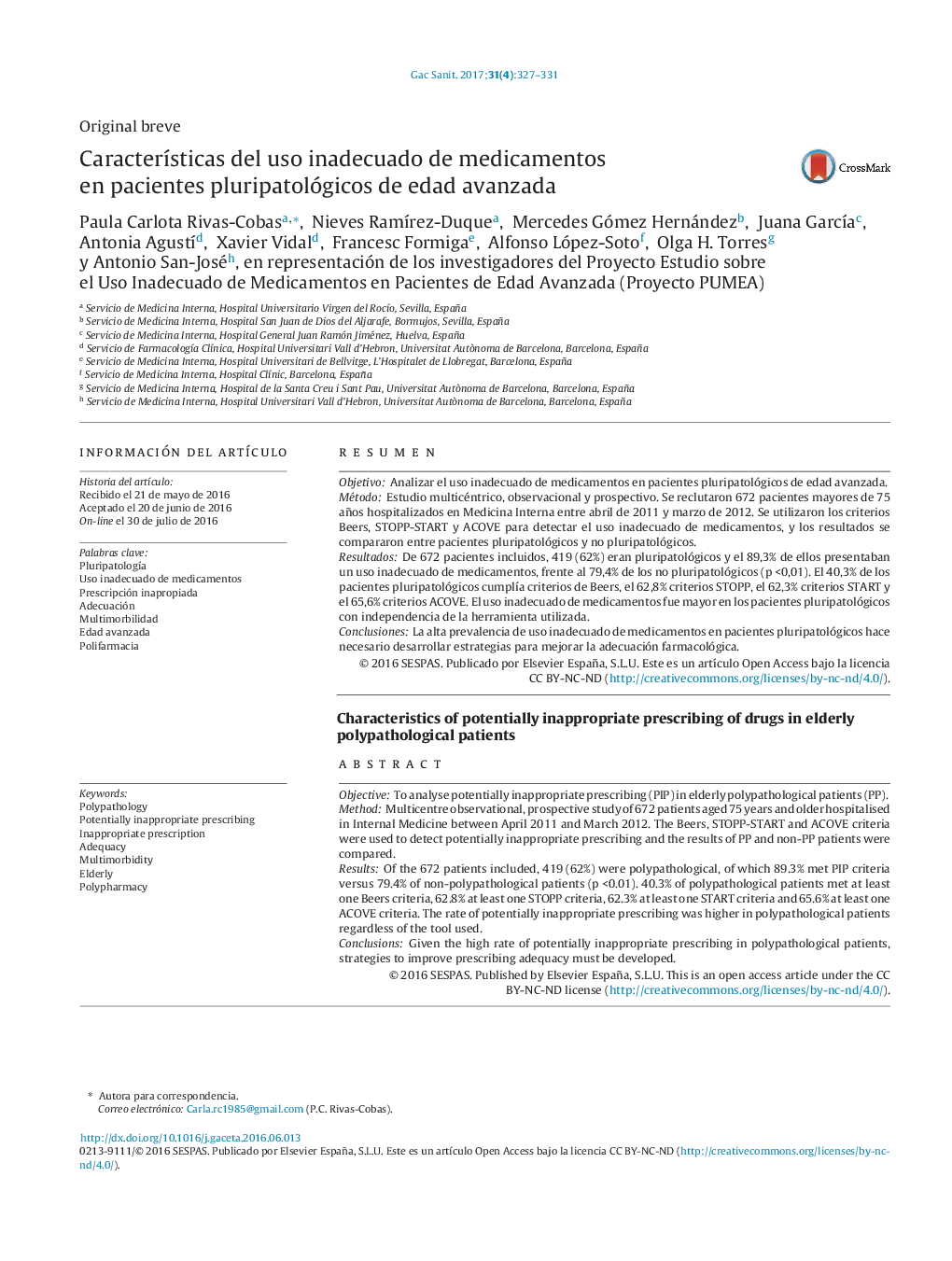| Article ID | Journal | Published Year | Pages | File Type |
|---|---|---|---|---|
| 5120578 | Gaceta Sanitaria | 2017 | 5 Pages |
ResumenObjetivoAnalizar el uso inadecuado de medicamentos en pacientes pluripatológicos de edad avanzada.MétodoEstudio multicéntrico, observacional y prospectivo. Se reclutaron 672 pacientes mayores de 75 años hospitalizados en Medicina Interna entre abril de 2011 y marzo de 2012. Se utilizaron los criterios Beers, STOPP-START y ACOVE para detectar el uso inadecuado de medicamentos, y los resultados se compararon entre pacientes pluripatológicos y no pluripatológicos.ResultadosDe 672 pacientes incluidos, 419 (62%) eran pluripatológicos y el 89,3% de ellos presentaban un uso inadecuado de medicamentos, frente al 79,4% de los no pluripatológicos (p <0,01). El 40,3% de los pacientes pluripatológicos cumplÃa criterios de Beers, el 62,8% criterios STOPP, el 62,3% criterios START y el 65,6% criterios ACOVE. El uso inadecuado de medicamentos fue mayor en los pacientes pluripatológicos con independencia de la herramienta utilizada.ConclusionesLa alta prevalencia de uso inadecuado de medicamentos en pacientes pluripatológicos hace necesario desarrollar estrategias para mejorar la adecuación farmacológica.
ObjectiveTo analyse potentially inappropriate prescribing (PIP) in elderly polypathological patients (PP).MethodMulticentre observational, prospective study of 672 patients aged 75 years and older hospitalised in Internal Medicine between April 2011 and March 2012. The Beers, STOPP-START and ACOVE criteria were used to detect potentially inappropriate prescribing and the results of PP and non-PP patients were compared.ResultsOf the 672 patients included, 419 (62%) were polypathological, of which 89.3% met PIP criteria versus 79.4% of non-polypathological patients (p <0.01). 40.3% of polypathological patients met at least one Beers criteria, 62.8% at least one STOPP criteria, 62.3% at least one START criteria and 65.6% at least one ACOVE criteria. The rate of potentially inappropriate prescribing was higher in polypathological patients regardless of the tool used.ConclusionsGiven the high rate of potentially inappropriate prescribing in polypathological patients, strategies to improve prescribing adequacy must be developed.
